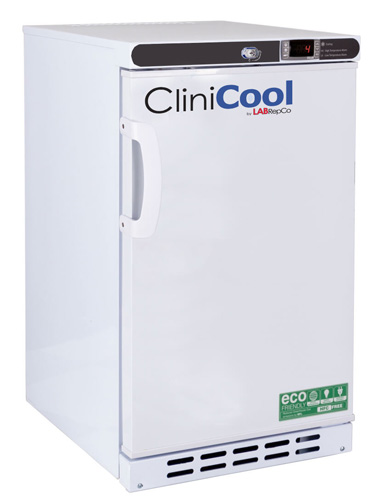When purchasing a refrigerator or freezer for a clinical facility, research center, laboratory or even just for your home, most people do not take into consideration the types of refrigeration defrost cycles. What they do not realize is that storing temperature sensitive samples (especially vaccines or temperature critical samples) in the wrong defrost cycle can damage them costing time and money.
What is a Defrost Cycle?
A refrigeration defrost cycle is designed to reduce frost buildup within the refrigerator or freezer. Defrost cycles automatically run when ice forms within the refrigerator or freezer. The cycles work by activating a heating component on the evaporator coil. The heat then slowly melts away the frost. The removal of frost allows the evaporator coil to regain optimal heat absorption for the unit to resume its normal cooling functions.
Why worry about Refrigerator & Freezer Defrost Cycles?
Freezers will obviously form frost and ice, but refrigerators are often thought of as a unit that does not go below freezing temperatures. So why worry about the defrost cycle within a refrigerator? Even though the interior of the unit may not fall below freezing, the cooling evaporator tubes, coils, or plates the refrigerator uses for temperature typically do. Frost and ice will eventually form and buildup if some type of defrost does not occur and the type of refrigeration defrost cycle utilized can dramatically impact interior cabinet temperatures.
Types of Refrigerator Defrost Cycles
Cycle Defrost
For refrigerators, there are two different defrost methods to chose from; cycle defrost or adaptive defrost. Cycle defrost occurs during the actual cycling (the regular on/off cycle) of the compressor, hence the name. This process occurs routinely in the refrigerator. Cycle defrost offers ideal temperature stability as its cycles are shorter and more frequent. Where as adaptive defrost where cycles tend to be longer causing higher temperature fluctuation.
Adaptive Defrost Cycle
With adaptive defrost, the refrigerator defrost cycle will only occur when defrosting is needed. This feature uses electronic controls to determine when the unit has too much frost built up. This process has longer wait periods between each defrost cycle. This results in a longer defrost cycle and potentially higher temperature fluctuations for longer periods of time. Adaptive defrost refrigerators are ideal for saving energy, but are not recommended for storing critical samples or vaccines.
Types of Freezer Defrost Cycles
Auto Defrost (frost-free)
As for freezer defrost cycles, there are also two different methods; Auto defrost (frost-free) and Manual defrost. Auto-defrost freezers are similar to the refrigerators, incorporating a timer and heater which typically cycles 2-3 times within 24 hours. The designs for the auto-defrost units can differ which varies the cycle duration and the interior temperature. This can raise temperatures potentially as much as 15°C which could cause damage to temperature sensitive samples within the unit.
Manual Defrost
Manual defrost freezers require more work having to physically turn the freezer off or unplug the unit. This also requires transferring items quickly from freezer to freezer so you can clean up after the ice has melted. The key advantage of the manual defrost method is not having to worry about temperature spikes found in auto-defrost freezers. Temperature spikes can potentially damage temperature sensitive products specifically biological samples such as enzymes.
To learn more about defrost cycles and the laboratory refrigerators & freezers or medical refrigerators and medical freezers LABRepCo offers, please contact our specialists by filling out the form below.





